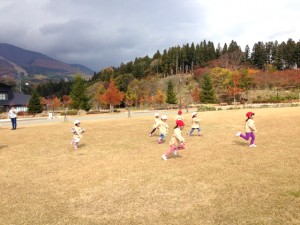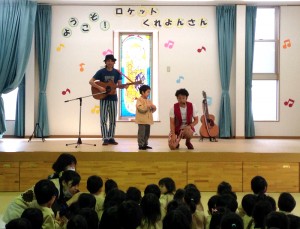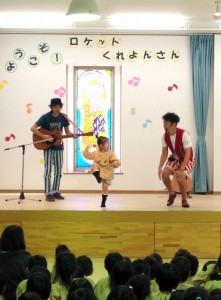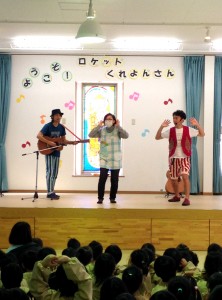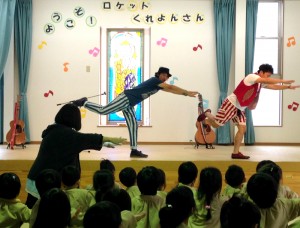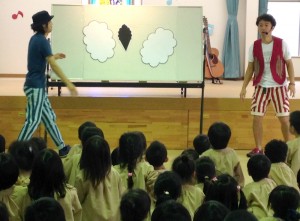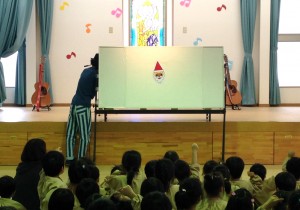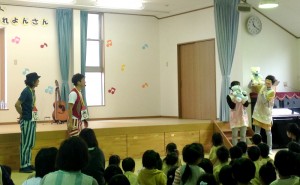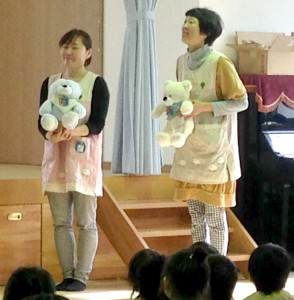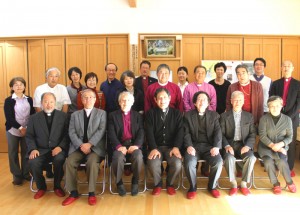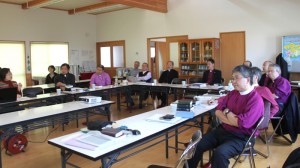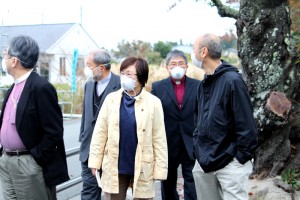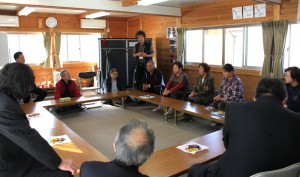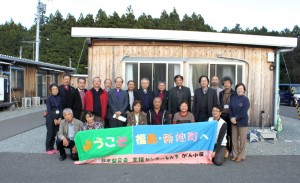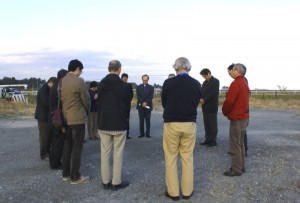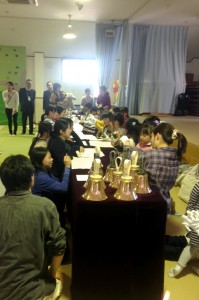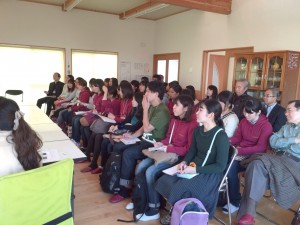Original Japanese written by staffer
The English below translated from the original Japanese by Heeday
The English translation edited by Rev. Dr. Henry French, ELCA
On Friday, November 13th, 2015, at St. Paul’s Kindergarten, located in Koriyama City, Fukushima, Ms. Kazumi Ushijima from the Kyushu Diocese of the Anglican-Episcopal Church in Japan held a free concert to entertain and encourage the children, after a child blessing ceremony.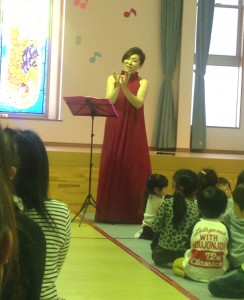
Accompanied by instruments played by some teachers of the kindergarten, Kazumi sang with “a lot of heart.” The enthusiasm in her songs moved the audience deeply.
In her first song, a Japanese one titled “Niji (Rainbow),” Kazumi taught the sign language for a rainbow, which the kindergarteners then learned. The audience and the singer thus came together on an emotional level.
Then she sang more Japanese songs such as “Kimi wo Nosete (Carrying You),” “Sen to Chihiro no Kamikakushi” (Always with Me (Spirited Away))”, and “Sayonara Boku no Yochien (Bye, My Kindergarten),” with the children joining in on the chorus. When she finished her last song, “Hana wa Saku (The Flower Will Blossom),” the whole place felt clean and bright.
Responding to “Encore!” Kazumi sang a cappella a song named “Ito (Thread),” which moved some of the mothers to tears.
After all the songs, the faculty of St. Paul’s presented Kazumi with a key holder they had handsewn with gratitude.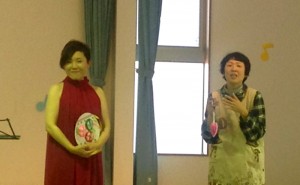
Then, Kazumi greeted the audience saying, “I always pray for you (Fukushima people), from Fukuoka, Kyushu,” which comforted everyone at the kindergarten.
After the concert, she shook hands with every single kindergarten child—a memory for them to cherish for the rest of their lifetimes.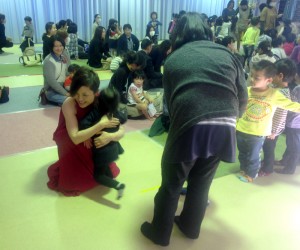
Refresh (Retreat) Program: “Summer Holidays in Takashima, a Southern Island of Nagasaki”
Over the last four years, the sincere assistance of the Kyushu Diocese has been of great help to the “Refresh (Retreat) Program,” which is targeted mainly at the children, and their parents, of kindergartens affiliated with the Anglican-Episcopal Church in Japan.
After the concert, the mothers served a luncheon to show their gratitude to Kazumi and Mr. Kimihara, who accompanied the singer. Mr. Kimihara was on the welcoming staff at the retreat program in Takashima, Nagasaki Prefecture, Kyushu. He took very good care of the program’s participants. Meeting him for the first time after many months, the participants talked happily about their experiences at the program.
The mothers served home-made foods like “imoni (boiled potatoes *),” a famous local food of Yamagata, a prefecture west of Fukushima, to communicate their gratitude to the guests from Kyushu.
After lunch, the children came in when their schools/kindergartens were over. They were overjoyed to see Mr. Kimihara after so many months. It was an encouraging moment, which demonstrated what a wonderful time those kids had in Takashima during the retreat program.
I want to express my sincere gratitude to Ms. Ushijima and the Kyushu Diocese for their warm encouragement.
* Translator’s note: ”Imoni” is a get-together held in many parts of Tohoku. In fall, many relatives and friends get together on a riverside around a big boiling pot of many ingredients.

